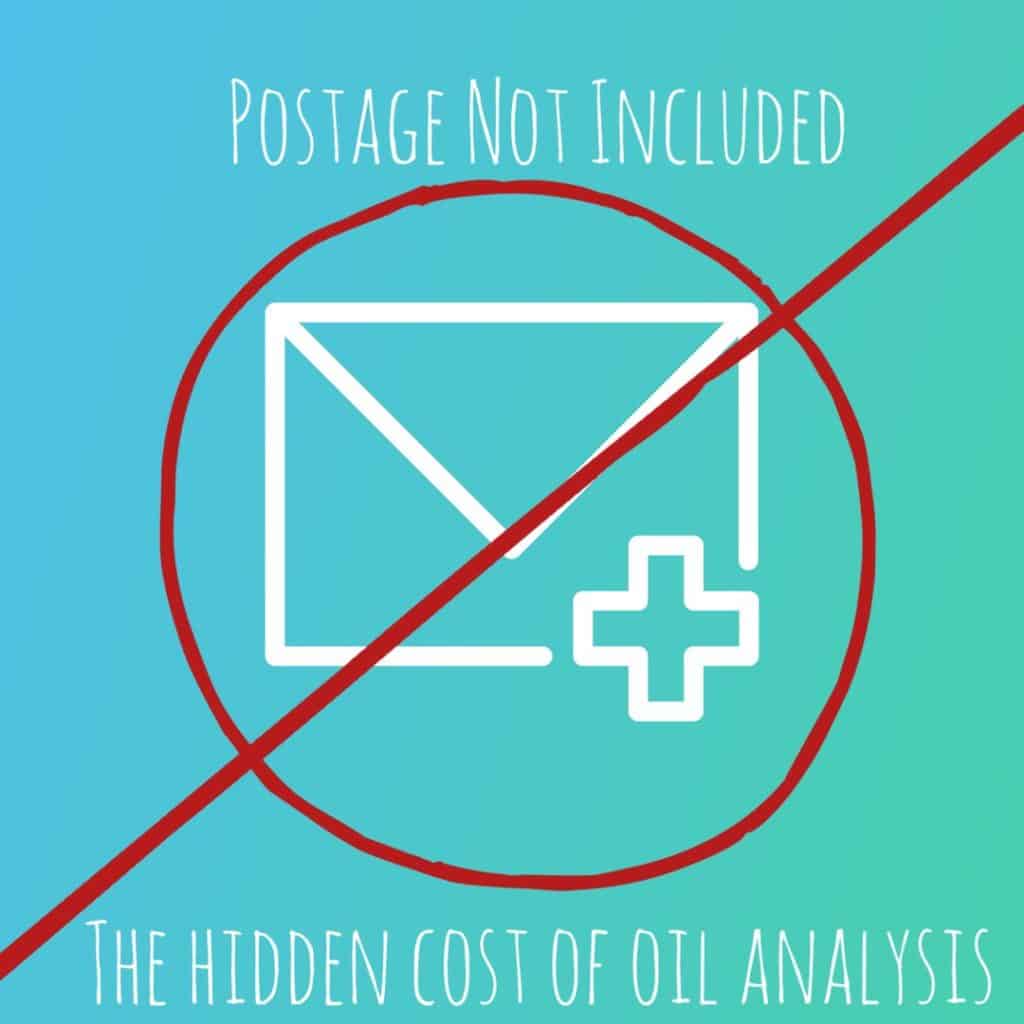Sometimes oil analysis prices can seem too good to be true – and sometimes they are!
Even if you have ensured the analysis is being performed by a reputable lab, OEM or Lube oil supplier and there are no hidden management fees – return postage charges are often forgotten; even more so – if you are shipping across country borders – costs may be greater than the analysis charge itself.
This can be particularly confusing to buyers, who are naturally price conscious and who may not appreciate those little plastic bottles they are buying, need to be filled with oil by their staff and then sent back to the lab at a cost, but whose cost – often the buyers (your) cost!
Hence – when assessing the cost of your oil analysis solution, consider not only the analysis charge, but all the essential components of the service – the bottle charge, the delivery and return charge of the sample bottles.
If it’s a one-off oil sample analysis you require, you may wish to include the cost of the vacuum pump too. However, these tend to be a one-off purchase and can last for years – if well maintained, so sometimes the cheapest is not the best option. If you are considering switching suppliers and have an existing vacuum pump, make sure the bottle you are buying fits the pump you currently own. The two most common industrial bottle sizes in use today are 38mm and 28mm tops, so only one will fit your existing vacuum pump. – I have managed 3 labs, each with different thread size bottles. I would certainly not let the thread size influence your choice of lab, if the service or overall price is much better, as you will certainly benefit by the lower charge or better service of the new supplier.
So when calculating the cost, or requesting a tender for your business – factor everything into your costs – from arrival of the bottles in their kits to the end report coming back to you – you may be surprised.
Since postage is usually something the lab has fixed charges, controlled by their national mail services or couriers – there does not appear to be much wiggle room on price for the lab or you.
Nevertheless, shipping is often done by weight or parcel size. The cost of 1 sample in a postal bag could be the same as 5 or 6 samples in the same bag. So it is best to consider how many samples you tend to take from a machine and send back to the lab at the same time. This can really reduce your costs e.g. if you regularly take samples from 5 sample points at the same time, then discuss with your supplier how best to return these samples back to the lab. This is a quick and easy way to reduce the costs for you and/or your supplier.
If shipping your samples abroad, there are a few options open to you and it is best to ask your lab for assistance how you can reduce the cost. It may be using local mail boxes, specialist couriers or sample batching. Having worked in a UK lab I have still managed to beat overall turnarounds of local labs by good courier and lab turnarounds. So I would not rule out a lab in a different country – if the service, turnaround time and price is viable to you.
So when a sales person offering oil analysis comes knocking on your door – make sure you ask for the total cost of the service from receipt of the sample kits to get the sample report – rather than just the price being stated in their brochures or price list.

